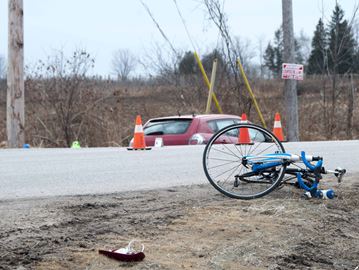 |
| Follow us on Twitter |

2) OTC Website for your Mobile

3) Post Photos to Pinterest

4) OTC on Foursquare

5) Safe Trails Manual

6) OTC Youtube Channel

7) Ontario Trails Maps

8) Enabling Change Program

9) OTC Board 2014-15
Jason Davis
Renfrew County
613-633-9683
Jdavis@countyofrenfrew.on.ca
Bonnie Simpson
Acting Treasurer
Kirkfield
705-438-5752
fortheotc@gmail.com
Patrick Connor
Ex-officio - Executive Director
Deseronto
613-484-1140
execdir@ontariotrails.ca
We are looking for 2 Board members interested in supporting the broad interests of all trails in Ontario. Interested give us a call. 613-484-1140
If you are interested in assisting the OTC, through fundraising, membership development, conference planning or as an educator, please e-mail Jack De Wit to discuss. cndhrsman@bell.net
Renfrew County
613-633-9683
Jdavis@countyofrenfrew.on.ca
Bonnie Simpson
Acting Treasurer
Kirkfield
705-438-5752
fortheotc@gmail.com
Patrick Connor
Ex-officio - Executive Director
Deseronto
613-484-1140
execdir@ontariotrails.ca
We are looking for 2 Board members interested in supporting the broad interests of all trails in Ontario. Interested give us a call. 613-484-1140
If you are interested in assisting the OTC, through fundraising, membership development, conference planning or as an educator, please e-mail Jack De Wit to discuss. cndhrsman@bell.net
Disclaimer
The ideas, opinions, re-posting of news, editorials and content contained in this newsletter are not necessarily the ideas or opinions of the OTC Board or staff. This news is intended for informational purposes only.
OTC Event Planning Guide
Call 877-668-7245

OTC Trail Committee Manual
Call 877-668-7245

Call 877-668-7245

Ontario Trails Membership
On behalf of OTC we thank you for your support. If there is a group you know that is not a member contact us and we'll send them a note on membership benefits. This past week we received a renewal from Niagara Peninsula Conservation Authority and Sault Ste. Marie Thank you very much for your support!
THANKS! MERCI!
On behalf of OTC we thank you for your support. If there is a group you know that is not a member contact us and we'll send them a note on membership benefits. This past week we received a renewal from Niagara Peninsula Conservation Authority and Sault Ste. Marie Thank you very much for your support!
THANKS! MERCI!




Surveys and Networking!
Be sure to get a copy of the latest OTC E-bulletin (circulation 980+) - here
Join one of our facebook pages (>10,000 friends) - here
Add or Edit your trail - here
Complete a survey - here
Twitter to or at us (20,840 followers) - here
Join the blog - here
Join Trail Counts - here
Take an On-Line Education Course - here
Join one of our facebook pages (>10,000 friends) - here
Add or Edit your trail - here
Complete a survey - here
Twitter to or at us (20,840 followers) - here
Join the blog - here
Join Trail Counts - here
Take an On-Line Education Course - here
Photo Credit Header - Friends of Killarney
COMPLETE THIS SURVEY PLEASE

The Ontario Trails Council has collected over 40,000 points of data on Ontario's recreational trails. We know that there is a trail in over 430 communities. We know Ontario maintains over 80,000 km of trails. This means a sizable investment of time, effort and funds has been utilized to create the world's largest system of trails. This survey asks you to provide more detail on the inputs of time, effort and investment that made trails in your area.
Thanks



